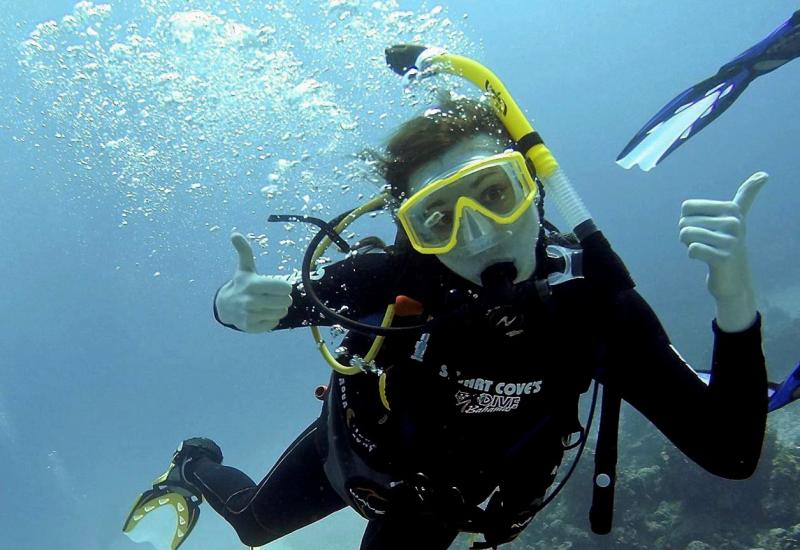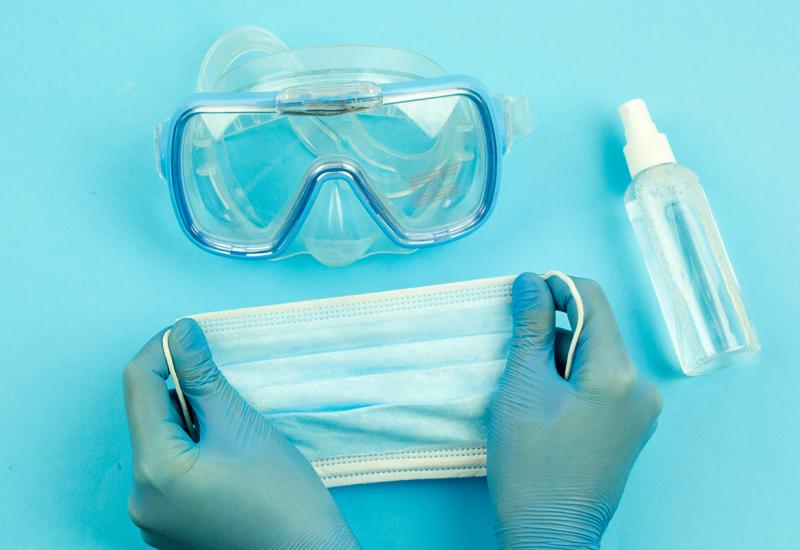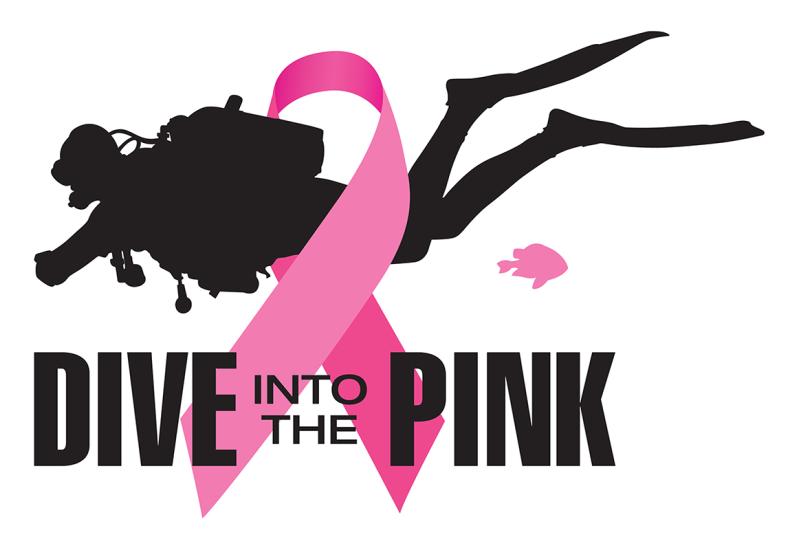Ask DAN: Equalization & Ear Injuries While Diving
The Divers Alert Network's Medical Information Line is a one-stop shop for divers who need answers to their scuba-related medical questions. This month we're introducing the first installment of a regular column where DAN provides you, our readers, with the answers to the top questions coming across its hotline desk. The most common topic of all: ear injuries and equalization techniques. So this month, we sit down with DAN to get the what, when, why and how of ear issues.
Here at DAN we get questions on a wide variety of dive topics through our Medical Information Line, but by far the most common and confusing problems for divers are why ear and equalization troubles happen and what the best choices are for solving these problems. For anyone having these troubles, the first step toward a solution is understanding what's going on in the middle ear. This air space connects to the outside world through the Eustachian tubes, which extend from the middle ear to the back of the throat. When a diver makes a descent, the increasing water pressure compresses the air in this space, causing a squeezing feeling. Equalizing this pressure requires a diver to add extra air through the Eustachian tubes, which compensates for the compression.
Divers use many different techniques to achieve the same goal, but one important, universal tip is to always descend feet-first. This lets the air travel upward more easily into the Eustachian tube and middle ear. We've found four specific techniques to be the most widely used and the most effective when the pressure starts to build:
The Valsalva Maneuver This one is by far the most common as it's usually the technique taught in dive certification classes. Just close your mouth, pinch your nose and blow gently. It's important to avoid blowing too hard and overinflating the middle ear space. This can occur if you are overly excited or having a difficult time equalizing during descent--especially if you wait too long before attempting to equalize.
The Frenzel Maneuver Start by closing your mouth and pinching your nose. Then, instead of blowing air into your sinuses, drive your tongue backward along the roof of your mouth. The muscle contraction opens the nasal cavities and Eustachian tubes, which allows air into the middle ear.
The Toynbee and the Lowry With the Toynbee, pinch your nose, close your mouth and swallow. The Lowry combines the Toynbee and Valsalva techniques--hold your nose and blow gently while swallowing.
This list is by no means exhaustive--there are other methods out there--but these four are the most common. Some divers find combining two or more of these works best for serious ear troubles, but it's not important which method you use, only that you find one that works.
Pressure Injuries
Regardless of the equalization method, a common diver mistake is waiting until the pressure and/or pain builds up before trying to equalize. It's best to start equalizing before discomfort occurs, preferably as soon as you start descending. Continue equalizing every few feet during the descent so the pressure doesn't have time to build up. If equalization doesn't go smoothly, ascend a few feet, let the pressure decrease and gently try again. If you still can't clear, calling the dive may be the only option because continuing your descent without equalizing can lead to a barotrauma (pressure-related injury), more commonly called an "ear squeeze."
As the surrounding water pressure increases during a descent, air spaces in the sinuses and middle ears must be able to equalize to the surrounding water pressure, or you'll feel pressure or pain from one of these areas. And it can happen on the way up, too. During ascent, if the expanding air can't escape, the cavity pressure increases, also resulting in discomfort. This type of injury can range in severity from mild, which usually manifests itself as minor discomfort, to extreme, which leads to intense pain, possibly causing damage to the inner ear.
Other symptoms of barotraumas include decreased or muffled hearing, roaring or ringing in the ear (tinnitus), nausea, vomiting, dizziness and a sensation of spinning (vertigo). These injuries require urgent medical treatment. Blood coming from the nose or showing up in the mouth may also indicate barotrauma and doesn't have to be associated with other symptoms.
These symptoms should probably end the day's--and possibly the week's--diving. Continuing to dive with a barotrauma may result in serious injury leading to permanent hearing loss, long-term or permanent balance control problems, vertigo, infections or perforated eardrums--just to name a few of the potential consequences.
In most cases, ear barotraumas will not end a diving career, but a fear of that outcome does keep many divers from seeking treatment. Of course, delaying treatment tends to make things worse, so if you even suspect you're hurt, get help. The earlier a problem is diagnosed, the more effective treatment is likely to be.
Difficulty equalizing that results in barotrauma can also be the result of a pre-existing condition, such as a history of ear infections that left the Eustachian tubes scarred or partially blocked. A deviated septum--whether natural, or the result of a broken nose--can prevent one or both ears from equalizing, and simple infections can also cause trouble. The middle ears have the same mucous membranes as those lining the nose and sinuses, and they are subject to any inflammation that occurs in these areas. If part of your middle ear swells as a result of nasal or sinus infections, or from an allergic reaction, you likely will experience problems. Don't dive until these symptoms have resolved.
Equalizing and ear issues do not automatically preclude you from diving. Visit a specialist so you know what the issue is, and take the doctor's advice if medication is required. After all, you don't want your medications wearing off in the middle of the dive, forcing you to make an ascent and leaving you with a list of potential problems to overcome.
Inner-ear DCS
Inner-ear decompression sickness, like any other kind of decompression sickness, occurs when bubbles form in body tissues--in this case, the fluid-filled spaces of the ear--and are unable to escape. The symptoms include hearing loss, vertigo and tinnitus that can't be attributed to barotrauma.
This condition can occur without any of the standard symptoms of central-nervous-system DCS, such as tingling or joint pain, and either form can occur independently from the other. Recompression treatment can help inner-ear DCS, but it can also make barotrauma injuries worse. So, it's important to get professional help and an accurate diagnosis. Any time you go to the doctor with a diving injury, it's important to provide an accurate history including your dive profiles, breathing gases and any problems with equalization. This information will help the evaluator differentiate between inner-ear barotrauma and inner-ear DCS.
Six steps for ear safety
- Test your ears and sinuses by equalizing before your descent.
- Descend at a slow, steady pace, equalizing early and often.
- Do not continue to descend or clear forcefully if you're having difficulty.
- Descend and equalize in a feet-first position; it is easier than head-first.
- If you do experience pain or discomfort, ascend until it's relieved. If you continue to have trouble, call the dive.
- If you regularly have problems with your ears and equalization, discuss it with your doctor or call DAN to speak with one of our medics.
What is DAN?
Divers Alert Network (DAN) is a 501(c)(3) nonprofit medical and research organization dedicated to the safety and health of recreational scuba divers.
For diving emergencies, call the DAN 24-Hour Diving Emergency Hotline: (919) 684-4DAN (collect calls accepted).
For nonemergency questions, call the DAN Medical Information Line at (919) 684-2948.
Additional information can be found at www.diversalertnetwork.org.
The Divers Alert Network's Medical Information Line is a one-stop shop for divers who need answers to their scuba-related medical questions. This month we're introducing the first installment of a regular column where DAN provides you, our readers, with the answers to the top questions coming across its hotline desk. The most common topic of all: ear injuries and equalization techniques. So this month, we sit down with DAN to get the what, when, why and how of ear issues.
Here at DAN we get questions on a wide variety of dive topics through our Medical Information Line, but by far the most common and confusing problems for divers are why ear and equalization troubles happen and what the best choices are for solving these problems. For anyone having these troubles, the first step toward a solution is understanding what's going on in the middle ear. This air space connects to the outside world through the Eustachian tubes, which extend from the middle ear to the back of the throat. When a diver makes a descent, the increasing water pressure compresses the air in this space, causing a squeezing feeling. Equalizing this pressure requires a diver to add extra air through the Eustachian tubes, which compensates for the compression.
Divers use many different techniques to achieve the same goal, but one important, universal tip is to always descend feet-first. This lets the air travel upward more easily into the Eustachian tube and middle ear. We've found four specific techniques to be the most widely used and the most effective when the pressure starts to build:
The Valsalva Maneuver This one is by far the most common as it's usually the technique taught in dive certification classes. Just close your mouth, pinch your nose and blow gently. It's important to avoid blowing too hard and overinflating the middle ear space. This can occur if you are overly excited or having a difficult time equalizing during descent--especially if you wait too long before attempting to equalize.
The Frenzel Maneuver Start by closing your mouth and pinching your nose. Then, instead of blowing air into your sinuses, drive your tongue backward along the roof of your mouth. The muscle contraction opens the nasal cavities and Eustachian tubes, which allows air into the middle ear.
The Toynbee and the Lowry With the Toynbee, pinch your nose, close your mouth and swallow. The Lowry combines the Toynbee and Valsalva techniques--hold your nose and blow gently while swallowing.
This list is by no means exhaustive--there are other methods out there--but these four are the most common. Some divers find combining two or more of these works best for serious ear troubles, but it's not important which method you use, only that you find one that works.
Pressure Injuries
Regardless of the equalization method, a common diver mistake is waiting until the pressure and/or pain builds up before trying to equalize. It's best to start equalizing before discomfort occurs, preferably as soon as you start descending. Continue equalizing every few feet during the descent so the pressure doesn't have time to build up. If equalization doesn't go smoothly, ascend a few feet, let the pressure decrease and gently try again. If you still can't clear, calling the dive may be the only option because continuing your descent without equalizing can lead to a barotrauma (pressure-related injury), more commonly called an "ear squeeze."
As the surrounding water pressure increases during a descent, air spaces in the sinuses and middle ears must be able to equalize to the surrounding water pressure, or you'll feel pressure or pain from one of these areas. And it can happen on the way up, too. During ascent, if the expanding air can't escape, the cavity pressure increases, also resulting in discomfort. This type of injury can range in severity from mild, which usually manifests itself as minor discomfort, to extreme, which leads to intense pain, possibly causing damage to the inner ear.
Other symptoms of barotraumas include decreased or muffled hearing, roaring or ringing in the ear (tinnitus), nausea, vomiting, dizziness and a sensation of spinning (vertigo). These injuries require urgent medical treatment. Blood coming from the nose or showing up in the mouth may also indicate barotrauma and doesn't have to be associated with other symptoms.
These symptoms should probably end the day's--and possibly the week's--diving. Continuing to dive with a barotrauma may result in serious injury leading to permanent hearing loss, long-term or permanent balance control problems, vertigo, infections or perforated eardrums--just to name a few of the potential consequences.
In most cases, ear barotraumas will not end a diving career, but a fear of that outcome does keep many divers from seeking treatment. Of course, delaying treatment tends to make things worse, so if you even suspect you're hurt, get help. The earlier a problem is diagnosed, the more effective treatment is likely to be.
Difficulty equalizing that results in barotrauma can also be the result of a pre-existing condition, such as a history of ear infections that left the Eustachian tubes scarred or partially blocked. A deviated septum--whether natural, or the result of a broken nose--can prevent one or both ears from equalizing, and simple infections can also cause trouble. The middle ears have the same mucous membranes as those lining the nose and sinuses, and they are subject to any inflammation that occurs in these areas. If part of your middle ear swells as a result of nasal or sinus infections, or from an allergic reaction, you likely will experience problems. Don't dive until these symptoms have resolved.
Equalizing and ear issues do not automatically preclude you from diving. Visit a specialist so you know what the issue is, and take the doctor's advice if medication is required. After all, you don't want your medications wearing off in the middle of the dive, forcing you to make an ascent and leaving you with a list of potential problems to overcome.
Inner-ear DCS
Inner-ear decompression sickness, like any other kind of decompression sickness, occurs when bubbles form in body tissues--in this case, the fluid-filled spaces of the ear--and are unable to escape. The symptoms include hearing loss, vertigo and tinnitus that can't be attributed to barotrauma.
This condition can occur without any of the standard symptoms of central-nervous-system DCS, such as tingling or joint pain, and either form can occur independently from the other. Recompression treatment can help inner-ear DCS, but it can also make barotrauma injuries worse. So, it's important to get professional help and an accurate diagnosis. Any time you go to the doctor with a diving injury, it's important to provide an accurate history including your dive profiles, breathing gases and any problems with equalization. This information will help the evaluator differentiate between inner-ear barotrauma and inner-ear DCS.
Six steps for ear safety
- Test your ears and sinuses by equalizing before your descent.
- Descend at a slow, steady pace, equalizing early and often.
- Do not continue to descend or clear forcefully if you're having difficulty.
- Descend and equalize in a feet-first position; it is easier than head-first.
- If you do experience pain or discomfort, ascend until it's relieved. If you continue to have trouble, call the dive.
- If you regularly have problems with your ears and equalization, discuss it with your doctor or call DAN to speak with one of our medics.
What is DAN?
Divers Alert Network (DAN) is a 501(c)(3) nonprofit medical and research organization dedicated to the safety and health of recreational scuba divers.
For diving emergencies, call the DAN 24-Hour Diving Emergency Hotline: (919) 684-4DAN (collect calls accepted).
For nonemergency questions, call the DAN Medical Information Line at (919) 684-2948.
Additional information can be found at www.diversalertnetwork.org.










